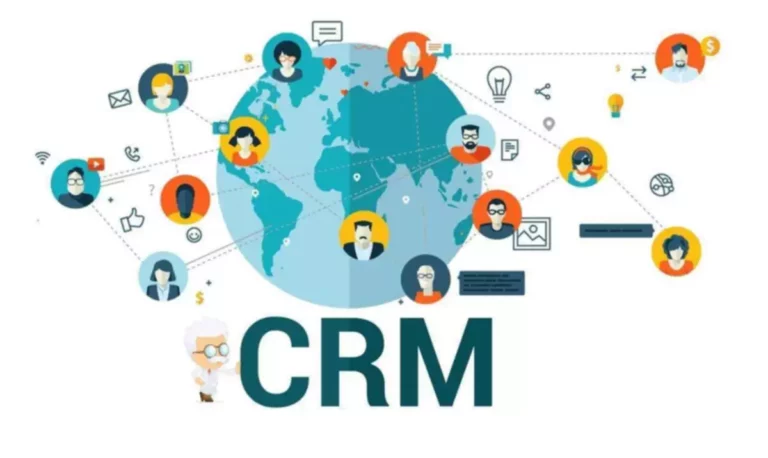Ultimate Guide to Operational CRM Benefits, Features & Challenges
However, 50% of those searchers did not buy but, instead, abandoned their carts. This insight can help you know how to offer them personalized marketing campaigns that convert, such as flash sales delivered via a triggered email when a cart is abandoned. An operational CRM improves routine processes by supporting cross-department collaboration while creating a cohesive customer journey regardless of which client-facing department they interact with. With an operational CRM, your interactions with customers are streamlined and smoother.
10 Best Practices for Harnessing the Power of Your CRM – JD Supra
10 Best Practices for Harnessing the Power of Your CRM.
Posted: Mon, 02 Oct 2023 16:26:10 GMT [source]
This is done by blending the sales, marketing, and customer service processes into one coherent platform called an operation CRM. Sales automation features can simplify the lead management process by automating the lead scoring process, so it’s easier to identify which potential customers to prioritize. Operational CRMs can also automatically determine the best tasks to assign each sales rep based on priority level and serve automated notices for specific steps to take to move a lead down the sales pipeline.
Using CRM for Marketing Automation
Sales involves your salespeople contacting potential customers to get them to purchase your product or service. Use operational CRM to improve how your team identifies prospects, how they move them through the sales funnel, and how they close. Through operational CRM, businesses can more efficiently prospect and handle leads management, building a more tailored sales leads list with a higher chance of success. Businesses can also cut marketing costs by being more efficient with their advertising and reach more of their target market while spending less. An operational CRM system captures customer details and uses them to provide service across the customer lifecycle, including marketing, sales and service automation.

There are pros and cons to buying an existing CRM versus designing your own. Going with an existing CRM may mean you forgo having the best possible workflow for your business, but designing a custom CRM can be costly and requires significant development work. If you cannot find an existing solution that would work for what you need, a custom version may be a suitable option. Examples of popular operational CRMs include Salesforce, Insightly and Pipedrive. Which type of CRM you need—or whether you’d benefit from investing in all three—depends on your particular business needs.
CRM Software Examples: What To Look For Before Buying
The power of customer relationship management is derived by constantly gathering customer data, analyzing that data, and then using those insights to deepen relationships and improve business results. It allows any customer-facing employee to convey, “We know you, and we value you.” Depending on the operational CRM selected, you may be able to score leads based on specific triggers or potential value, helping your sales team to prioritize sales efforts. This streamlines business processes further by highlighting leads with the greatest chance of closing or those that already repeat buy. Analytical CRM applications utilize tools and techniques such as data mining, predictive modeling, and customer segmentation to analyze client data.

You can fill in your CRM database with the contacts that you get in webinars, events, direct marketing campaigns, contests, SMS-based campaigns, etc. This tool helps in assigning tasks, keeping tabs on who is operations crm doing what, and allows you to share contact and lead information among other necessary data between team members. More than 90% of all companies with an employee scale greater than 10 people use CRM software.
Examples of How a CRM Can Organize Operations
With a consolidated view of every prospect and customer, a CRM system is then used to manage day-to-day customer activities and interactions. From a marketing perspective, this means engaging your prospects with the right message, at the right time, through targeted digital marketing campaigns and journeys. For sales, reps can work faster and smarter with a clear view of their pipeline and accomplish more accurate forecasting. Commerce teams can quickly launch and scale ecommerce — from online orders to curbside pickup — for their consumer shoppers (B2C commerce) and business buyers (B2B commerce). And customer service agents can respond to customer needs on any channel — from home, in the field, or in the office.
- It is estimated that the software part contributes to half the annual revenue of Zoho Corp.
- Businesses with more linear sales processes will usually get the most out of operational CRMs.
- Sales automation features can simplify the lead management process by automating the lead scoring process, so it’s easier to identify which potential customers to prioritize.
- A CRM consultant makes, on average, $141,708 in the US, and guides organizations on how to improve their customer experience with recommendations for new strategies, systems, and training [5].
- It provides easy access to necessary customer details, which can be utilized to deliver personalized and meaningful engagement.
It does this by combining Marketing Hub, Sales Hub, Service Hub, and CMS Hub, along with hundreds of available integrations, to facilitate marketing, sales, and service processes. Some CRMs can also deliver marketing analytics, track the ROI of online ads, and offer companies deep insight into individual leads. Some can even help businesses with more challenging, specialized marketing practices like SEO and blogging.
What Is CRM? The Ultimate Guide (
Large data sets, when handled manually, often overwhelm company reps, leading to dropped qualified leads and undervalued customers. A CRM fixes this by capturing leads consistently and customer data automatically, then tracking every interaction or touchpoint with little effort on your team’s behalf. From there, automated data analysis kicks in, creating instant reports that reveal actionable opportunities and reminders to take advantage of them. Marketing tasks that operational CRMs help to automate include designing, distributing and tracking email campaigns and sequences. This could mean a sale or upsell is lost as the missing data limits your company reps’ ability to create personalized experiences based on that data.
A CRM with powerful yet intuitive reporting features will help you find the trends and insights in your CRM. Cloud-based CRMs that use a subscription model for payment are the most common options. But you can also find some on-premise CRM products that you buy once for a certain number of users and then download to your onsite devices. The latter may seem like a simpler financial option, but it makes it hard for your CRM to scale with your company as you add more people, and it limits your access to product updates.
CRM 101: What is CRM?
Operational CRM systems can be leveraged to improve cross-team collaboration, automate tasks, and analyze performance. These tools enable different business departments to come together and create more effective customer journeys. Organizational CRM serves this purpose by keeping sales, marketing, and support operations aligned. It keeps data organized and improves the efficiency of internal processes to accelerate business growth. Along with aiding cross-departmental data sharing and collaboration, operational CRM also automates key processes, helping deliver quick solutions to customers. While the other two types of CRM are more concerned with just one business function, operational CRM tools are far more broad-scoped.


